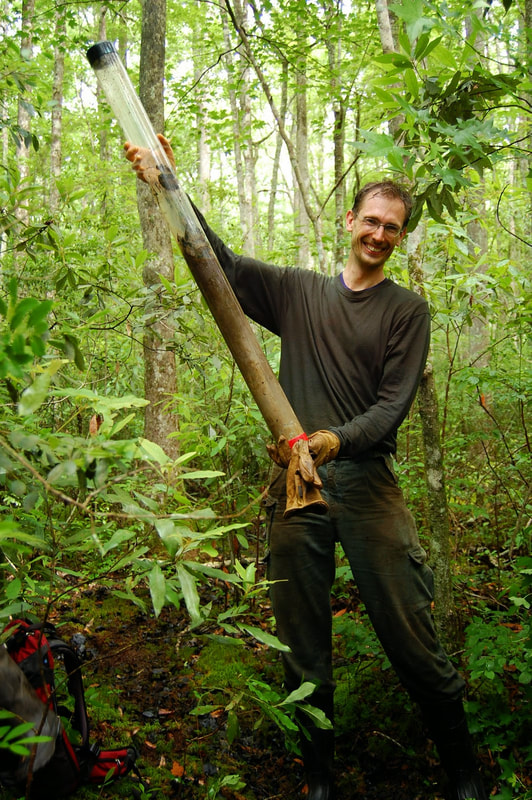The term “ecohydrology” relates primarily to my good colleagues Jean-Christophe Domec and Ge Sun, working with whom has shaped my thinking of plant growth and plant-environment interactions. It was in collaboration with them that I learned to appreciate the critical role that xylem anatomy plays in plant-environment interactions, and the mechanisms and time scales of coupling between the stomata and plant hydraulic conductance. While my focus has been on carbon fluxes, the role of water availability was often central. Even in wetland forests, water availability can constrain plant gas exchange. Plant water relations is also the topic that engages the students in my Forest Ecology class the most. Of the many feedbacks and interactions covered in the course, the complexity and far-reaching implications of plant water transport amaze and resonate with the most.
What are your undergraduate and graduate degrees in?
My BS is in Biology from the University of Tartu in Estonia (with semester-long stints in the University of Joensuu in Finland, and the Swedish Agricultural University in Uppsala, Sweden), and MS and PhD in Forest Science from Michigan Technological University.
How did you arrive at working in/thinking about ecohydrology?
Among my first projects were plant gas exchange measurements with Olevi Kull and Anu Sôber back in Estonia (using a home-made gas exchange system that filled half an office). “Stomatal conductance” was among the first phrases that I spoke as a budding scientist. Starting from there, and throughout the rest of my academic career, water availability has always been the factor without which one cannot talk about carbon exchange. Although never explicitly my main focus, moisture effects on photosynthesis, growth and allocation have been inseparable from the carbon fluxes themselves.
What do you see as an important emerging area of ecohydrology?
A growing number of recent reports have underlined the tightness of coupling between water, carbon and nutrient cycles. To me, the soil-plant-environment system serves as an effective model of the entire world. Though conceptually simple, many aspects of this self-stabilizing system remain poorly understood. I think the coming decades will elucidate many of the connections, and a lot of it has to do with quantitative and system-level understanding of belowground processes – the interactions between the live, the dead, and the mineral.
Do you have a favorite ecohydrology paper? Describe/explain.
For the ecohydrology work that I have participated in, the most influential study that we have cited is perhaps the concept of reference conductance proposed by Ram Oren and colleagues (Oren R, Sperry JS, Katul GG, Pataki DE, Ewers BE, Phillips N, Schafer KVR (1999) Survey and synthesis of intra- and interspecific variation in stomatal sensitivity to vapour pressure deficit. Plant, Cell and Environment 22: 1515-1526, doi: 10.1046/j.1365-3040.1999.00513.x). It has been used to great effect in local and global context, and served as the foundation for a number of other more recent landmark papers.
What do you do for fun (apart from ecohydrology)?
These days, I spend a fair amount of time improving my frisbee skills with my daughter, going for the occasional run, and learning the piano.

 RSS Feed
RSS Feed